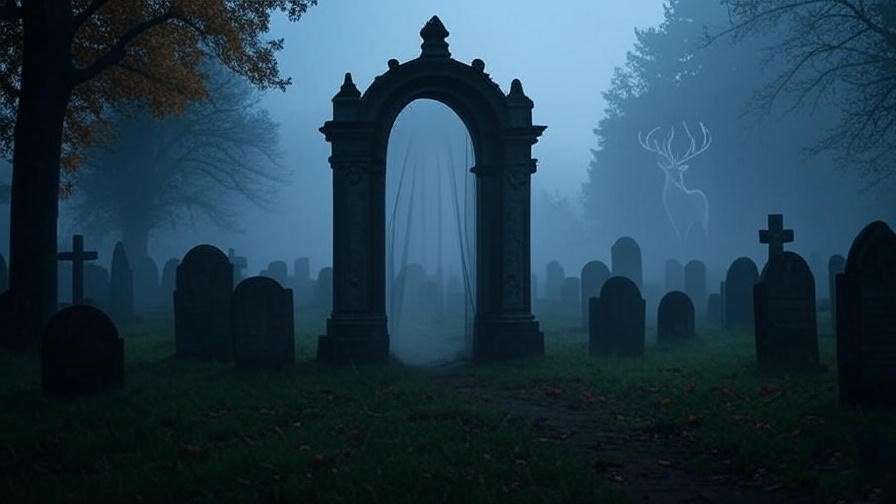Imagine a world where fear lurks in every shadow, where a teenager’s anger mirrors a society’s unrest, and where hope hinges on the courage of a few. Welcome to Harry Potter and the Order of the Phoenix, J.K. Rowling’s darkest and most complex installment in the beloved series. For fans seeking a quick yet thorough refresher on the chapters in Order of the Phoenix summarized, or new readers navigating its 870+ pages, this guide is your Portkey to clarity. As a lifelong Harry Potter scholar with years of analyzing Rowling’s work, I’ve crafted this chapter-by-chapter summary to distill the novel’s intricate plot, themes, and character arcs into a concise, engaging resource. Whether you’re revisiting Harry’s fifth year, studying the book for school, or exploring it for the first time, this article solves the problem of untangling the story’s depth while preserving its magic.
This guide not only summarizes each of the 38 chapters but also highlights key themes, character developments, and pivotal moments, making it easier to grasp the story’s emotional weight and narrative significance. Let’s dive into the rebellion, loss, and unity that define Order of the Phoenix, ensuring you’re equipped to appreciate Harry’s darkest adventure.
Why Order of the Phoenix Stands Out in the Harry Potter Series
A Darker, More Mature Tone
Order of the Phoenix marks a turning point in the Harry Potter saga, shifting from the lighter adventures of earlier books to a grittier, more mature narrative. At 15, Harry grapples with anger, isolation, and the trauma of witnessing Voldemort’s return in Goblet of Fire. The wizarding world, meanwhile, is fracturing under the Ministry of Magic’s denial and Dolores Umbridge’s oppressive regime at Hogwarts. This darker tone resonates with readers, reflecting real-world struggles like political corruption and personal grief. As Rowling herself noted in a 2005 interview, “This book is about Harry growing up and facing the consequences of his choices.” Its emotional depth sets it apart, making chapter summaries essential for navigating its complexity.

Key Themes and Motifs
The novel weaves themes of rebellion, loyalty, and unity through its sprawling plot. Harry’s fight against Umbridge’s tyranny mirrors the Order’s resistance to Voldemort, highlighting the power of collective action. Grief permeates the story, especially after a devastating loss, while adolescence brings Harry’s anger and impulsiveness to the forefront. These themes connect to universal experiences—standing up to injustice, coping with loss, and finding strength in community—making the book timeless. Summarizing the chapters helps readers track these motifs across the narrative, enhancing their appreciation of Rowling’s storytelling.
Why Summaries Are Helpful
With 38 chapters and over 257,000 words, Order of the Phoenix is the longest Harry Potter book, packed with subplots, new characters, and intricate world-building. Summaries simplify this density, offering a clear roadmap for fans refreshing their memory, students analyzing themes for essays, or new readers tackling the novel’s length. By breaking down each chapter, this guide ensures you catch critical details—like the formation of Dumbledore’s Army or the prophecy’s reveal—without getting lost in the book’s heft. It’s a tool for both casual readers and dedicated Potterheads seeking deeper insight.
Chapter-by-Chapter Summaries of Order of the Phoenix
Chapters 1–5: Setting the Stage
Chapter 1: Dudley Demented
Harry Potter’s summer in Little Whinging is anything but peaceful. Tormented by nightmares of Voldemort and isolated from his friends, Harry’s frustration peaks when Dementors attack him and his cousin Dudley in an alley. Harry casts a Patronus Charm to save them, revealing his magic to the Muggle world and risking expulsion from Hogwarts. The chapter introduces Mrs. Figg as a Squib working with the Order, hinting at a larger network protecting Harry. Key Themes: Isolation, fear of consequences, and the intrusion of the wizarding world into Muggle life. Notable Moment: Harry’s stag Patronus showcases his growing magical prowess.
Chapter 2: A Peck of Owls
The fallout from the Dementor attack is swift. Harry receives a Ministry letter threatening expulsion for underage magic, followed by a flurry of owls delivering conflicting messages: one rescinds the expulsion, another summons him to a disciplinary hearing. Uncle Vernon’s rage and Aunt Petunia’s surprising knowledge of Dementors add tension, while Mrs. Figg and Mundungus Fletcher reveal their ties to the Order. Key Themes: Bureaucracy, secrecy, and family dynamics. Expert Insight: The Ministry’s denial of Voldemort’s return mirrors real-world institutional failures to confront looming threats, a recurring motif in Rowling’s work.
Chapter 3: The Advance Guard
Harry’s rescue from Privet Drive comes via the Advance Guard, a group of Order members including Mad-Eye Moody, Nymphadora Tonks, and Remus Lupin. They whisk him away on broomsticks to a mysterious destination, showcasing the Order’s resourcefulness. The chapter’s action-packed escape contrasts with Harry’s earlier isolation, reintroducing camaraderie. Key Themes: Trust, teamwork, and the thrill of rebellion. Notable Moment: Tonks’s Metamorphmagus abilities add levity, foreshadowing her role as a fan-favorite character.
Chapter 4: Number Twelve, Grimmauld Place
Harry arrives at the Order’s headquarters, the grim and magically hidden Black family home at 12 Grimmauld Place. He reunites with Sirius Black, his godfather, and learns about the house’s dark history, including the Black family tapestry. The chapter sets up the Order’s secretive operations and Sirius’s complex relationship with his past. Key Themes: Family legacy, confinement, and hidden worlds. Expert Tip: The tapestry symbolizes the wizarding world’s obsession with blood purity, a theme that intensifies later.
Chapter 5: The Order of the Phoenix
At Grimmauld Place, Harry reunites with Ron, Hermione, and the Weasleys, learning about the Order’s mission to combat Voldemort. Frustrated by being kept in the dark, Harry’s anger flares, but Hermione and Ron’s loyalty grounds him. The chapter introduces key Order members and establishes the group’s role as a resistance force. Key Themes: Resistance, trust, and the burden of secrecy. Notable Moment: Molly Weasley’s protective instincts highlight the emotional stakes of the Order’s fight.
Chapters 6–10: Hogwarts Under Siege
Chapter 6: The Noble and Most Ancient House of Black
Harry learns more about Sirius’s troubled family history, including the house’s grim artifacts and Kreacher, the resentful house-elf. The chapter deepens Sirius’s character, revealing his bitterness toward his upbringing. Key Themes: Legacy, resentment, and the weight of the past. Notable Moment: Kreacher’s muttering foreshadows his later significance.
Chapter 7: The Ministry of Magic
Harry’s disciplinary hearing at the Ministry exposes its bureaucratic dysfunction and prejudice against him. Dumbledore’s defense secures his acquittal, but the experience leaves Harry distrustful of the Ministry. Key Themes: Injustice, authority, and institutional bias. Expert Insight: Rowling uses the hearing to critique blind adherence to rules, a theme echoed in Umbridge’s actions.
Chapter 8: The Hearing
This chapter overlaps with the trial’s conclusion, emphasizing Fudge’s denial of Voldemort’s return and Dumbledore’s calm authority. Harry’s relief is tempered by the Ministry’s hostility. Key Themes: Power struggles, truth versus denial. Notable Moment: Mrs. Figg’s testimony as a Squib adds unexpected humor and depth.
Chapter 9: The Woes of Mrs. Weasley
Back at Grimmauld Place, Molly Weasley’s fears for her family manifest in a Boggart that transforms into their corpses, a haunting moment of vulnerability. Harry’s growing connection to the Weasleys underscores their role as his surrogate family. Key Themes: Fear, family, and emotional stakes. Notable Moment: The Boggart scene is a masterclass in Rowling’s ability to blend horror and heart.
Chapter 10: Luna Lovegood
On the Hogwarts Express, Harry meets Luna Lovegood, whose quirky demeanor and belief in conspiracy theories contrast with her quiet wisdom. The chapter reintroduces Hogwarts life while hinting at the Ministry’s propaganda campaign via The Quibbler. Key Themes: Acceptance, individuality, and media influence. Notable Moment: Luna’s introduction marks her as a key ally, embodying the theme of loyalty.
Chapters 11–20: The Rise of Dumbledore’s Army
Chapter 11: The Sorting Hat’s New Song
Back at Hogwarts, the Sorting Hat’s song warns of division and the need for unity among the houses. Dolores Umbridge, the new Defense Against the Dark Arts teacher, is introduced, her saccharine demeanor hiding a sinister agenda. Key Themes: Unity, deception, and foreboding. Notable Moment: The Sorting Hat’s call for solidarity foreshadows the school’s internal conflicts under Umbridge’s rule.

Chapter 12: Professor Umbridge
Umbridge’s first lesson reveals her Ministry-approved curriculum, which prioritizes theory over practical defense, frustrating Harry and his peers. Her refusal to acknowledge Voldemort’s return sparks Harry’s defiance, earning him detention. Key Themes: Oppression, resistance, and truth. Expert Insight: Umbridge’s control reflects real-world authoritarian tactics, making her a uniquely loathsome villain.
Chapter 13: Detention with Dolores
Harry endures Umbridge’s cruel detention, writing lines with a quill that carves words into his hand, leaving scars. Hermione and Ron urge him to keep quiet, but his anger grows. Key Themes: Cruelty, resilience, and suppressed rebellion. Notable Moment: The blood quill symbolizes Umbridge’s sadistic abuse of power, a chilling escalation of her villainy.
Chapter 14: Percy and Padfoot
Harry receives a letter from Sirius, who risks exposure to communicate via the Floo Network. Percy’s letter disowning his family for supporting Dumbledore highlights the wizarding world’s division. Key Themes: Loyalty, betrayal, and risk. Notable Moment: Sirius’s reckless appearance in the fire underscores his desperation to connect with Harry.
Chapter 15: The Hogwarts High Inquisitor
Umbridge is appointed High Inquisitor, granting her power to inspect teachers and enforce Ministry decrees. Her authoritarian grip tightens, sowing fear among students and staff. Key Themes: Control, surveillance, and institutional corruption. Expert Tip: Umbridge’s decrees mirror dystopian governance, a theme Rowling explores to critique unchecked authority.
Chapter 16: In the Hog’s Head
Hermione proposes forming a secret group to learn practical defense, leading to a meeting at the Hog’s Head pub. Students, including Cho Chang and Luna, join, naming the group Dumbledore’s Army (DA). Key Themes: Rebellion, leadership, and unity. Notable Moment: The DA’s formation is a pivotal act of defiance, showcasing Harry’s emerging leadership.
Chapter 17: Educational Decree Number Twenty-Four
Umbridge bans unauthorized student groups, forcing the DA to operate in secret. Tensions rise as her decrees stifle Hogwarts’ spirit. Key Themes: Suppression, secrecy, and resistance. Notable Moment: The decree’s passage pushes the DA underground, heightening the stakes of their rebellion.
Chapter 18: Dumbledore’s Army
The DA begins training in the Room of Requirement, a magical space that adapts to their needs. Harry teaches spells like Expelliarmus, fostering camaraderie and skill. Key Themes: Empowerment, teamwork, and hope. Expert Insight: The Room of Requirement symbolizes the power of collective will, a recurring motif in Rowling’s work.
Chapter 19: The Lion and the Serpent
Slytherin’s taunts during a Quidditch match provoke Harry and George, leading to their ban from the team by Umbridge. Hagrid returns, battered from his mission to the giants. Key Themes: Injustice, loyalty, and perseverance. Notable Moment: The Quidditch ban highlights Umbridge’s pettiness and Harry’s growing isolation.
Chapter 20: Hagrid’s Tale
Hagrid recounts his failed mission to recruit giants, revealing the challenges facing the Order. His injuries and Umbridge’s scrutiny add urgency to the resistance. Key Themes: Sacrifice, danger, and global stakes. Notable Moment: Hagrid’s tale expands the wizarding world, showing the broader fight against Voldemort.
Chapters 21–30: Escalating Conflict
Chapter 21: The Eye of the Snake
Harry’s vision of a snake attacking Arthur Weasley alarms the Order, confirming his mental link to Voldemort. Dumbledore arranges Occlumency lessons to protect Harry’s mind. Key Themes: Vulnerability, connection, and destiny. Notable Moment: The vision marks a turning point, deepening Harry’s role in the war.
Chapter 22: St. Mungo’s Hospital for Magical Maladies and Injuries
Harry and the Weasleys visit Arthur in the hospital, encountering Neville’s parents, victims of Bellatrix Lestrange’s torture. The revelation adds depth to Neville’s arc. Key Themes: Trauma, family, and hidden pain. Expert Insight: Neville’s backstory underscores the war’s lasting impact, a theme central to the series.
Chapter 23: Christmas on the Closed Ward
During the hospital visit, Harry overhears Order members discussing his connection to Voldemort, fueling his fear of being possessed. Key Themes: Self-doubt, fear, and isolation. Notable Moment: The encounter with Lockhart, now a patient, adds a bittersweet nod to earlier books.
Chapter 24: Occlumency
Snape begins teaching Harry Occlumency to block Voldemort’s influence, but their mutual distrust hinders progress. Sirius’s confinement at Grimmauld Place strains their bond. Key Themes: Trust, mental discipline, and strained relationships. Notable Moment: Snape’s harsh teaching style foreshadows his complex role.
Chapter 25: The Beetle at Bay
Rita Skeeter’s article in The Quibbler, arranged by Hermione, publicizes Harry’s story of Voldemort’s return, rallying public support. Umbridge bans the magazine, escalating her crackdown. Key Themes: Media, defiance, and truth. Expert Tip: Hermione’s strategy highlights her cunning, a key trait in her arc.
Chapter 26: Seen and Unforeseen
Harry’s Occlumency lessons falter, and he dreams of the Department of Mysteries, hinting at the prophecy. Trelawney is sacked by Umbridge, but Dumbledore intervenes. Key Themes: Destiny, resistance, and foresight. Notable Moment: Firenze’s appointment as Divination teacher introduces centaur lore.
Chapter 27: The Centaur and the Sneak
Marietta Edgecombe betrays the DA, leading to Umbridge’s ambush. Dumbledore takes the blame and flees, leaving Hogwarts under Umbridge’s control. Key Themes: Betrayal, sacrifice, and power shifts. Notable Moment: Dumbledore’s escape showcases his unmatched skill and loyalty.
Chapter 28: Snape’s Worst Memory
During an Occlumency lesson, Harry glimpses Snape’s memory of being bullied by James Potter, complicating his view of his father. Key Themes: Perspective, morality, and past mistakes. Expert Insight: This memory humanizes Snape, setting up his layered arc in later books.
Chapter 29: Career Advice
Harry discusses his ambition to become an Auror with McGonagall, who defies Umbridge’s interference. The Weasley twins plan their rebellion. Key Themes: Ambition, defiance, and mentorship. Notable Moment: McGonagall’s fierce support for Harry is a fan-favorite moment.
Chapter 30: Grawp
Hagrid introduces Harry and Hermione to his giant half-brother, Grawp, asking them to care for him if he’s sacked. The Weasley twins stage a spectacular exit from Hogwarts. Key Themes: Loyalty, chaos, and family. Notable Moment: Fred and George’s fireworks display is an iconic act of rebellion.
| Chapter | Key Event | Characters Involved | Theme |
|---|---|---|---|
| 21 | Harry’s vision of Arthur’s attack | Harry, Dumbledore, Arthur | Destiny |
| 27 | DA betrayal | Marietta, Umbridge, Dumbledore | Betrayal |
| 30 | Weasley twins’ exit | Fred, George, Umbridge | Rebellion |
Chapters 31–38: Climax and Resolution
Chapter 31: O.W.L.s
The fifth-years face their Ordinary Wizarding Level exams amid Umbridge’s tyranny. Harry’s stress peaks as he balances exams and visions. Key Themes: Pressure, perseverance, and growth. Notable Moment: The exams highlight Hogwarts’ academic rigor, grounding the magical world.

Chapter 32: Out of the Fire
Harry’s vision of Sirius being tortured in the Department of Mysteries prompts a rescue mission. Hermione’s caution is overruled by Harry’s urgency. Key Themes: Impulsiveness, loyalty, and danger. Notable Moment: The vision’s ambiguity builds suspense, a hallmark of Rowling’s pacing.
Chapter 33: Fight and Flight
Harry and his friends infiltrate the Ministry, only to be ambushed by Death Eaters seeking the prophecy. A chaotic battle ensues. Key Themes: Courage, sacrifice, and chaos. Notable Moment: The action-packed sequence showcases the DA’s training.
Chapter 34: The Department of Mysteries
The group navigates the mysterious Department, discovering the prophecy orb labeled with Harry’s name. The Death Eaters’ pursuit intensifies. Key Themes: Mystery, fate, and pursuit. Expert Insight: The Department’s surreal setting symbolizes the unknown of Harry’s destiny.
Chapter 35: Beyond the Veil
The Order arrives to aid Harry, but Sirius is killed by Bellatrix Lestrange, falling through a mysterious veil. The loss devastates Harry. Key Themes: Grief, loss, and irreversible consequences. Notable Moment: Sirius’s death is a gut-punch, shifting the series’ emotional weight.
Chapter 36: The Only One He Ever Feared
Dumbledore battles Voldemort in a spectacular duel, saving Harry. Voldemort flees, but the Ministry finally acknowledges his return. Key Themes: Power, redemption, and truth. Notable Moment: Dumbledore’s prowess cements his status as a legendary wizard.
Chapter 37: The Lost Prophecy
Dumbledore reveals the prophecy: Harry or Voldemort must die at the other’s hand. The revelation reshapes Harry’s understanding of his fate. Key Themes: Destiny, responsibility, and sacrifice. Expert Insight: The prophecy sets up the series’ endgame, a masterstroke of Rowling’s plotting.
Chapter 38: The Second War Begins
Harry grapples with Sirius’s death and the prophecy’s weight. The wizarding world braces for war as Voldemort’s return is confirmed. Key Themes: Grief, resolve, and new beginnings. Notable Moment: Harry’s acceptance of his role marks his transition to adulthood.
Key Characters and Their Arcs
Harry Potter
Harry’s fifth year is defined by anger, grief, and growth. His defiance against Umbridge and leadership of the DA showcase his evolution from a reactive boy to a proactive leader. Sirius’s death forces him to confront loss, shaping his resolve for the war ahead. Key Development: Harry’s Occlumency struggles highlight his vulnerability, making him relatable.
Dolores Umbridge
Umbridge is a chilling antagonist, her polite facade masking cruelty and prejudice. Her control of Hogwarts via decrees and punishments reflects authoritarianism, making her a symbol of institutional corruption. Key Development: Her downfall, driven by the DA and centaurs, is a satisfying triumph of justice.
Supporting Characters
- Ron Weasley: Loyal but insecure, Ron supports Harry while grappling with family pressures.
- Hermione Granger: Her intelligence and initiative shine in forming the DA and outsmarting Umbridge.
- Sirius Black: Trapped in Grimmauld Place, Sirius’s recklessness leads to his tragic end, deepening Harry’s loss.
- Albus Dumbledore: His strategic absence and eventual return highlight his wisdom and sacrifice.
- Luna Lovegood: Her quirky wisdom and loyalty make her a vital ally, embodying acceptance.
- Nymphadora Tonks: Her humor and bravery add vibrancy to the Order’s efforts.
Major Themes and Symbolism
Resistance Against Oppression
The DA and the Order embody resistance against Umbridge’s tyranny and Voldemort’s threat. Their defiance mirrors real-world struggles against oppressive systems, resonating with readers. Example: The DA’s secret meetings symbolize grassroots rebellion, a universal theme.

Grief and Loss
Sirius’s death and Neville’s parents’ tragedy underscore the war’s toll. Harry’s grief humanizes him, making his journey poignant. Expert Insight: Rowling, in a 2007 interview, said, “Loss is a key part of Harry’s growth,” emphasizing its narrative weight.
The Power of Unity
The DA’s success and the Order’s coordination highlight unity’s strength. Hogwarts’ diverse students banding together reflect the series’ core message of solidarity. Symbolism: The Room of Requirement represents collective will, adapting to the group’s needs.
How to Use This Summary
For Fans Revisiting the Series
Use these summaries to refresh your memory before rereading or watching the film adaptation. Focus on key moments like the DA’s formation or Sirius’s death to recapture the story’s emotional beats. Tip: Pair this guide with the movie to spot differences, enhancing your appreciation.
For Students and Book Clubs
This guide aids literary analysis or discussion. Use the chapter summaries to identify themes for essays, like “How does Umbridge’s control reflect authoritarianism?” or “How does loss shape Harry’s arc?” Example Prompt: Analyze the symbolism of the prophecy in shaping Harry’s destiny.
For New Readers
Tackle Order of the Phoenix’s length by using this guide as a roadmap. Read summaries before or after chapters to track the plot and themes, ensuring you don’t miss critical details. Tip: Bookmark this article for quick reference during your read.
FAQs About Order of the Phoenix
How many chapters are in Order of the Phoenix?
The book has 38 chapters, making it the longest in the Harry Potter series at over 257,000 words.
What is the main conflict in Order of the Phoenix?
Harry and his allies face Voldemort’s return and Umbridge’s oppressive control of Hogwarts, battling both external and institutional threats.
Why is Order of the Phoenix considered the darkest book?
Its themes of grief, political corruption, and Harry’s anger, coupled with Sirius’s death, create a heavier tone than earlier books.
How does the prophecy affect the story?
The prophecy, revealed in Chapter 37, states that Harry or Voldemort must die, shaping Harry’s destiny and the series’ trajectory.
This chapter-by-chapter summary of Order of the Phoenix offers a clear, concise guide to Harry Potter’s darkest adventure, capturing its themes of rebellion, grief, and unity. Whether you’re a fan revisiting the series, a student analyzing its depth, or a new reader navigating its length, this article equips you to fully appreciate J.K. Rowling’s masterpiece. Bookmark this guide, share it with fellow Potterheads, and dive back into the magic of Hogwarts. What’s your favorite moment from Order of the Phoenix? Let us know in the comments!













